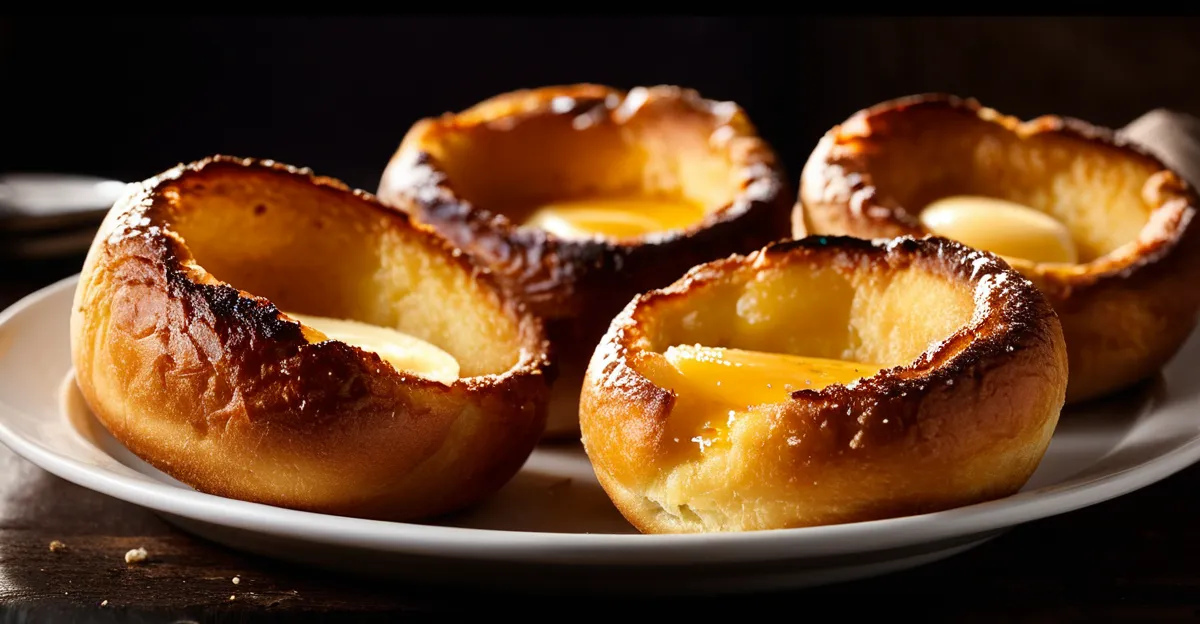Essential tips for making perfect Yorkshire pudding
Achieving perfect Yorkshire pudding hinges on a few critical factors, notably precise ingredient ratios and mastering the mixing technique. To start, ensure your batter combines the right balance of flour, eggs, and milk; typically, equal volumes of eggs and milk to flour yield an ideal consistency. This balance influences how well the batter rises and sets during baking.
Mixing the batter smoothly but without overbeating is equally important. Incorporate air gently to help the puddings puff up but avoid vigorous stirring that can develop gluten, leading to toughness. Letting the batter rest for at least 30 minutes allows the flour to absorb the liquid fully, yielding a smoother texture and better rise.
In parallel : How do you prepare a traditional shepherd’s pie with a twist?
When it comes to cooking, preheat your oven and roasting tins until they are scorching hot, as this heat shock is essential for creating the iconic crispy edges and golden rise. Quickly pour the batter into the hot fat within the tins to seal in steam, which drives the puddings’ puffiness.
Avoid common mistakes like under-heating the fat or opening the oven door frequently during baking. These actions cause temperature drops that result in flat, soggy Yorkshire puddings. Instead, use high smoking-point fats such as beef dripping or vegetable oil and keep the oven door closed to maintain consistent temperature.
Also read : What are the steps to crafting a traditional sticky toffee pudding?
Following these Yorkshire pudding tips will significantly increase your chances of baking success, ensuring your puddings are impressively risen, crisp, and a delight to eat every time.
Optimal ingredient selection and preparation
Selecting the right ingredients for Yorkshire pudding is fundamental to success. Use plain wheat flour with moderate protein content to strike the perfect balance between structure and tenderness. The classic ratio involves equal volumes of flour, eggs, and milk, which creates a smooth, pourable batter essential for a light rise.
Sifting your flour before mixing introduces air and removes lumps, contributing to an even texture. Combining the eggs and milk thoroughly before adding the flour helps prevent overmixing. This is crucial because vigorous mixing develops gluten, which can make the pudding tough rather than airy.
Resting the batter for at least 30 minutes at room temperature is a key baking advice step. This resting period allows the flour to fully hydrate, resulting in a batter that is more cohesive and yields a better rise during baking. Moreover, the air trapped during gentle mixing stays intact, supporting the characteristic puff of a perfect Yorkshire pudding.
By carefully balancing ingredient ratios, sifting flour, incorporating air thoughtfully, and allowing the batter to rest, you apply essential Yorkshire pudding tips that ensure an ideal texture and rise. This preparation stage directly influences how well the pudding performs in the oven and adds to the overall quality of your final dish.
Getting the oven and tin right
Success with Yorkshire pudding depends heavily on mastering the oven temperature and tin preparation. The oven temperature for Yorkshire pudding should be very high—typically around 220°C (425°F) or hotter. This intense heat is vital because it creates the rapid steam production needed to lift the batter and form those iconic puffed edges.
Preheating both your oven and roasting tins thoroughly is essential. The tins must be smoking hot before you add the batter. This ensures the fat inside immediately sizzles the batter’s outer layer, sealing it quickly and trapping the steam. Without this step, puddings risk becoming dense rather than airy and crispy.
Choosing the right fat further supports this effect. The traditional recommendation is beef dripping, prized for its high smoking point and distinct flavour, which enhances crispiness. If you prefer oil, opt for one with a high smoke point like vegetable or sunflower oil to prevent burning at high temperatures.
To ensure even heat distribution, avoid overcrowding the oven. Leaving space between tins helps maintain consistent heat around each pudding, promoting an even rise. Positioning the tins on the middle or upper racks typically yields the best results, balancing direct heat and airflow.
By combining proper preheating, selecting the ideal fat, and monitoring oven placement, you apply critical cooking tips that elevate your Yorkshire pudding from good to perfect.
Baking techniques for puff and rise
Achieving rising Yorkshire puddings depends on swift, precise baking techniques that maximize steam generation and batter expansion. Once the tin is fully preheated and filled with hot fat, pour the batter quickly yet evenly to prevent the temperature from dropping. This immediate contact with hot fat causes the batter to start cooking and puffing rapidly.
Oven shelf placement is crucial; position tins on the middle or upper racks to expose the puddings to intense heat from above and below. This ensures even cooking and supports the iconic golden rise while preventing the base from burning prematurely. Avoid overcrowding the oven, as insufficient airflow impairs heat distribution and reduces puffiness.
One of the most critical baking tips is to keep the oven door firmly closed throughout cooking. Opening the door causes a rapid temperature drop, disrupting steam formation and causing puddings to collapse or become soggy. Retaining stable oven heat preserves the rising effect and crispy edges, essential for the perfect Yorkshire pudding.
These precise methods—quick filling, optimal oven positioning, and maintaining a sealed oven environment—are proven techniques for producing Yorkshire puddings with impressive volume and texture. Following these expert guidance steps transforms batter into beautifully risen, crisp indulgences every time.
Troubleshooting common Yorkshire pudding problems
Encountering flat puddings or soggy puddings is a frequent challenge in making the perfect Yorkshire pudding. The main culprit behind flat puddings is insufficient oven heat or fat temperature. If the oven temperature for Yorkshire pudding is too low or the fat isn’t smoking hot, the batter won’t rise properly. Quickly pouring cold batter into lukewarm tins fails to create the essential steam, leading to dense, collapsed puddings.
To remedy this, always preheat your oven and tins thoroughly until the fat is visibly hot and sizzling. Use fats like beef dripping or high smoke point oils, which retain heat better and support crisp edges. Avoid opening the oven door during baking, as this causes heat loss and steam escape, contributing to deflated puddings.
Soggy puddings often result from excess moisture in the batter or adding too little fat in the tin. Make sure your batter has balanced proportions of flour, eggs, and milk, and rest it appropriately to improve texture. Additionally, use enough hot fat to coat the base of each tin generously; this creates a barrier preventing sticking and encourages crispiness.
Sticking problems can be prevented by maintaining a well-oiled, hot tin and using recommended fats. If sticking occurs, allow puddings to cool slightly before attempting removal to avoid tearing. Remember that patience and attention to temperature are key baking advice points steeped in expert guidance.
Common issues are part of the learning curve. By understanding these causes and applying precise Yorkshire pudding tips, you can troubleshoot effectively, turning failed attempts into delicious successes.
Additional expert tips and variations
Exploring advanced Yorkshire pudding tips can elevate your baking from classic to creative. Adding flavour twists such as finely chopped herbs—rosemary or thyme—incorporates a subtle aromatic note without overpowering the pudding’s traditional taste. For a richer texture, softly grated cheese mixed into the batter introduces a pleasant savoury depth.
Presentation ideas add visual appeal and enhance the dining experience. Consider making mini Yorkshire puddings for bite-sized appetizers or serving large puddings split and filled with roast beef and horseradish sauce for a hearty main course. Using silicone muffin trays creates uniform shapes and easy release, perfect for both casual and formal occasions.
When experimenting, keep in mind the core baking advice to maintain correct ingredient ratios and cooking temperatures. These variations work best when foundational Yorkshire pudding tips are consistently applied. Combining creativity with reliable techniques ensures your puddings impress both in flavour and form.
Serving suggestions often include pairing Yorkshire puddings with traditional gravy and roast dinners, but they also shine alongside cold cuts or as a base for savoury toppings. These ideas offer versatility, allowing the classic pudding to adapt to seasonal ingredients and personal preferences while retaining its iconic texture and charm.





